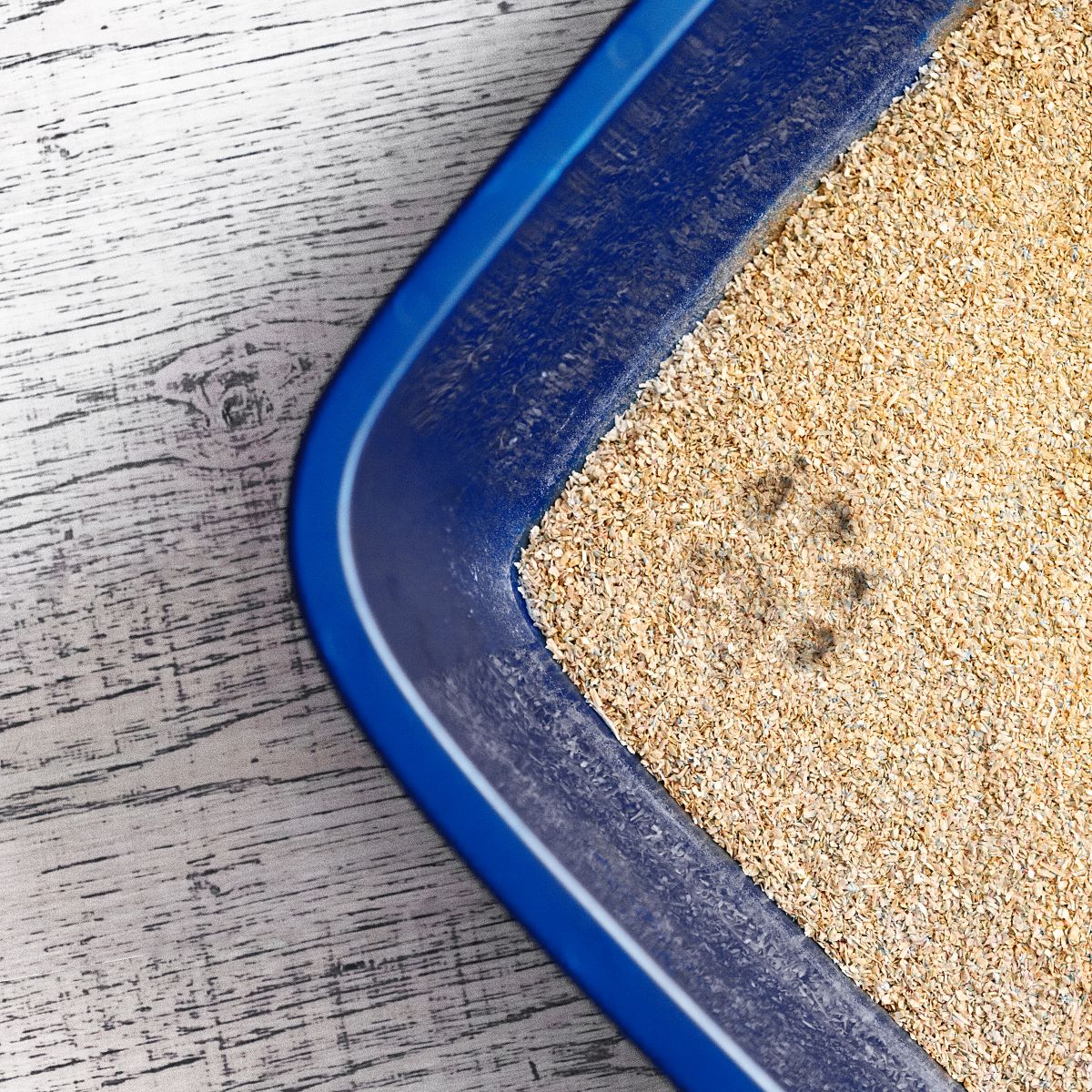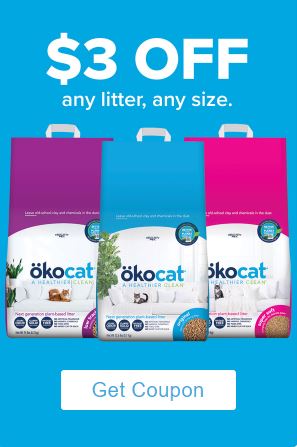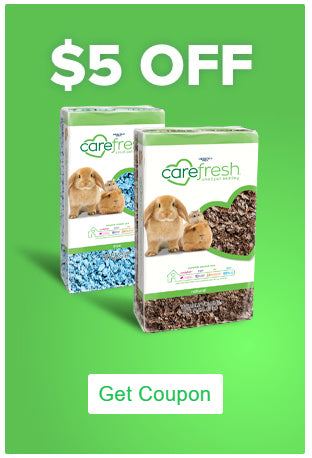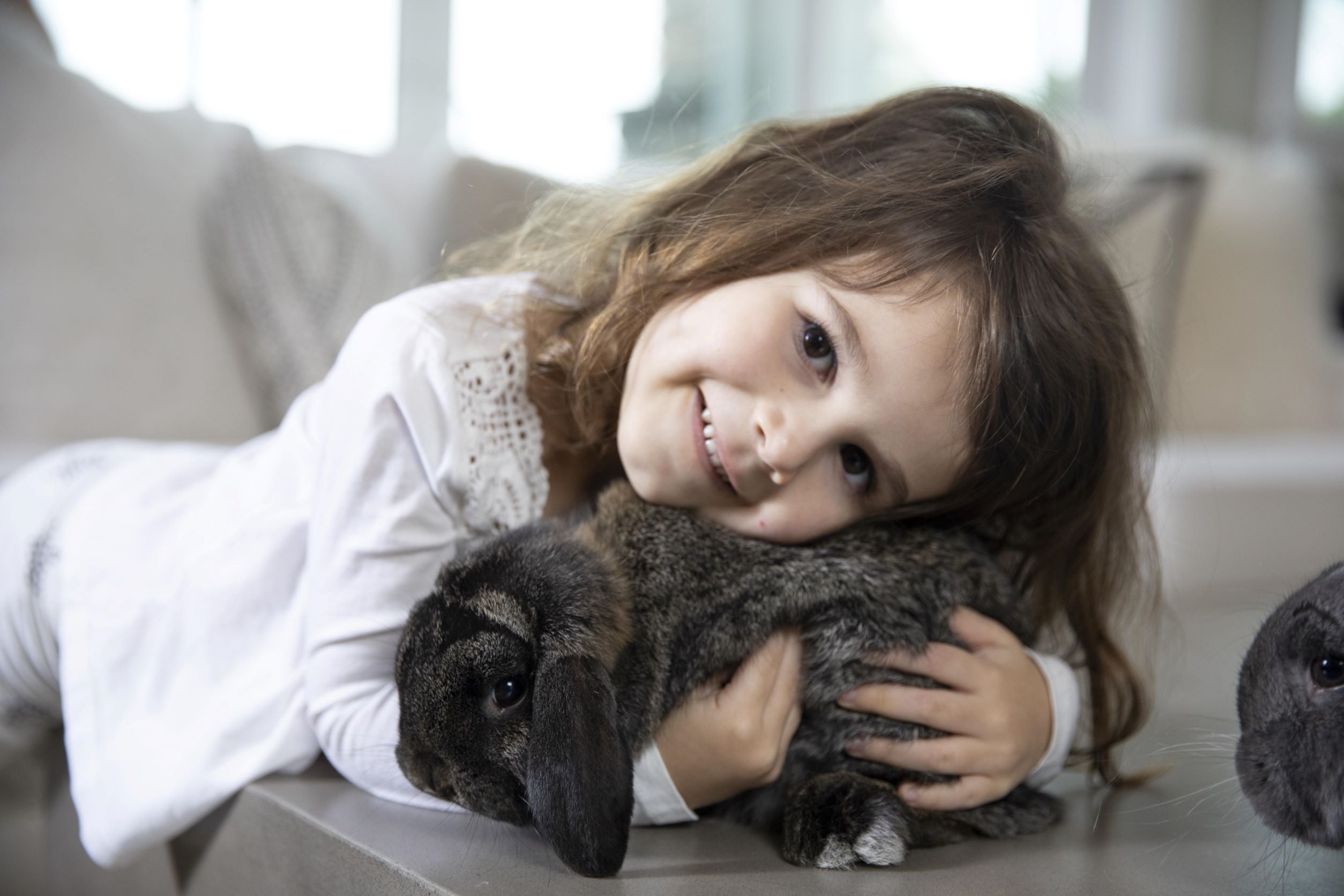Your Ultimate Guide to Choosing the Right ökocat Litter for Your Cat's Needs
Choosing the right cat litter might not seem like a big deal—until your cat decides it is. Whether you're new to the ökocat brand or simply looking to try a different formula, this guide will help you find the perfect match for both your cat’s needs and your lifestyle.
Why ökocat?
ökocat is a natural, plant-based cat litter made from sustainably sourced wood fiber—free from harmful chemicals, synthetic fragrances, and dusty clay or silica. It's designed to be healthier for your cat, your home, and the planet. But with several formulas to choose from, how do you know which one is right for you?
Let’s break it down.
1. Best for Long-Haired Cats: ökocat Low Tracking
If your feline has a fabulous coat that tends to trap litter between their toes, Low Tracking is your go-to. This formula is made of mini pellets that are easy on paws and less likely to cling to long fur and get kicked out of the litter box.
Top Benefits:
Mini-pellets that won't stick to paws or hair
Excellent clumping and odor control
Low tracking
2. Best for Odor Control: ökocat Original
If you need serious odor control, especially in a multi-cat household, ökocat Original Premium natural cat litter delivers. This formula locks in moisture and neutralizes odors on contact—without any artificial fragrances.
Top Benefits:
Superior odor control
Clumps tight for easy scooping
Long-lasting with less waste
3. Best for Cats with Sensitive Systems: ökocat Dust-Free or Low Tracking
Got a sneezing kitty (or human)? Try Dust-Free or Less Mess—both are crafted for cats (and people) who are sensitive to dust or fragrances.
Dust-Free:
Clean paper fiber with virtually no dust
Ideal for allergy-prone cats and homes
Also great for post-surgical needs
Low Tracking Less Mess:
Pellet-style litter that stays in the box
Great for active diggers or messy cats
4. Best for Kittens: ökocat Super Soft or Dust-Free
Kittens deserve a gentle start, and Super Soft natural wood clumping cat litter is perfect for tiny paws and early litter box training. For kittens with extra sensitive noses or respiratory systems, Dust-Free is also a safe pick.
Why It Works:
Non-toxic and natural
Gentle on small paws
Safe if accidentally ingested during learning but always monitor carefully if they eat too much
5. Best for Eco-Conscious Cat Parents: All ökocat Litters
Honestly, all ökocat formulas are eco-friendly, biodegradable, and sustainably sourced. They're made from reclaimed wood and are 100% compostable—yes, even the packaging! You can feel good about what you’re buying and where it ends up.
Quick Comparison Chart
okocat Formula
Best For
Texture
Clumping
Dust Level
Super Soft
Sensitive paws, kittens
Fine, soft
✔️
Low
Original Clumping
Odor control, all cats
Medium granules
✔️
Low
Low Tracking
Long hair cats, active diggers, tracking control
Pellets
✔️
Low
Dust-Free
Allergies/sensitivity
Fine, refined fiber
No
Virtually none
Final Tips for Success
Transition gradually. Mix ökocat with your old litter over 7–10 days to help your cat adjust.
Scoop daily. While ökocat lasts longer, frequent scooping keeps the box fresher.
Choose the right litter box. Low-walled boxes work best for kittens, while high-sided ones help reduce mess with pellet formulas.
Ready to Make the Switch?
No matter your cat’s personality, coat type, or sensitivities, there's an ökocat litter that fits purr-fectly. Natural, effective, and safe—it’s litter made for living.
👉 Explore all ökocat formulas here and find your feline’s favorite today!
Read More🐾 Why Dust‑Free Bedding Matters for Your Small Pet’s Health
When it comes to caring for your small pets—whether it's a guinea pig, hamster, rabbit, or rat—bedding might seem like a simple choice. But one of the most important features you should look for is dust-free bedding. While soft textures and odor control are great, a low-dust formula can make a significant difference in your pet’s overall health and well-being.
1. Spare Their Sensitive Lungs
carefresh is 99% dust-free, thanks to its soft “comfyfluff™” natural paper fibers. Unlike wood shavings or straw that throw off harmful dust, carefresh keeps the airborne particles minimal—protecting tiny lungs from irritation and reducing risks of respiratory issues.
2. A Cleaner Habitat (and Easier for You)
With low dust comes less mess. No constant dust clouds on walls, food dishes, or toys means less cleaning. Plus, carefresh absorbs twice as much liquid as shavings, keeping bedding drier for longer and cutting down on complete cage clean-ups.
3. Safer, Softer, Happier
Made with no harsh dyes or chemicals, and being biodegradable, carefresh offers a gentle, eco-friendly solution. Its soft texture supports pets’ nesting, burrowing, and natural behaviors while comforting delicate feet and eyes.
4. Battling Smells with No Fuss
carefresh’s odor-control system can suppress ammonia smells for up to 10 days—meaning the cage stays fresh and fewer deep cleans are needed.
5. Backed by Happy Pet Parents
On Reddit, a hamster owner shared:
“I actually don't mind it at all! … he burrows in it like mad so he clearly enjoys it” (Reddit)Another added they’ve noticed recent batches are virtually dust-free--a real quality upgrade (Reddit).
💡 Care Tips for Best Results
Depth matters: Use 2–6 inches depending on your pet (hamsters vs. rabbits) for comfortable nesting.
Spot clean daily, full clean weekly—longer with carefresh's absorbency and odor control.
Store sealed and dry to preserve freshness and minimize any minimal dust release.
Introduce gradually, especially if switching bedding or colors.
Final Thoughts
Choosing carefresh 99% dust‑free bedding gives your pet a healthier, more comfortable environment—less dust, fewer odors, softer nesting, and supportive of vital instincts. It’s a small change with a huge impact on long-term wellbeing—for your pet and you.
Read MoreHow to Puppy-Proof Your Home for Small Breeds
Photo by Tima Miroshnichenko on Pexels
Bringing a small-breed puppy home is exciting, but you must prepare your space. Tiny pups explore with their mouths and paws, and they find hazards faster than you think. A small slip can lead to big harm. Puppy-proofing keeps your new friend safe and protects your belongings.
Focus on common risks like wires, toxic plants, and loose objects. Be sure to set aside non-slip rugs and secure cabinets, and plan for supervision. You can save time and avoid stress by prepping early. Your puppy will also feel at home from day one. Follow these steps to puppy-proof your home before your puppy arrives.
Designate a safe zone
Before bringing toy poodle puppies home, section off a small area and use a playpen or baby gate to limit access. Remove breakable items and cords, cover sharp corners with protectors, and add a cozy bed and low toys. Additionally, add non-slip mats to prevent falls.
This spot doubles as a retreat when your pup needs rest. A defined space reduces stress for both of you. It also keeps hazards at bay. Start here and expand gradually as your puppy grows and explores.
Secure electrical cords
Tiny teeth can chew through exposed wires fast. Bundle cords with cable wraps or hide them behind furniture. Use cord protectors or plastic tubing for extra safety. Additionally, keep extension leads up high or tucked away, and check for loose outlets and cover them. A sudden electric shock can be life-threatening. Test the security regularly by gently pulling cords to ensure they stay hidden. You want all wires out of reach. This simple step cuts risk and gives you peace of mind.
Protect trash and recycling
A bitten plastic bag can choke a tiny pup. Keep all bins behind closed cabinet doors or use lidded cans with step-on pedals. Clean containers regularly to remove tempting smells. Be sure to also lock the lids if you store food scraps. For recycling, rinse materials and store them out of reach. Make sure yard bins are secured to avoid scavenging outdoors. Proper trash management cuts the risk of blockages, poisoning, and digestive issues for small breeds.
Remove toxic plants
Many common plants can harm small pups. Pothos, aloe, and lilies top the list. Move any suspect greenery out of reach. Consider swapping for pet-safe species like spider plants. If you can’t remove certain plants, place them on high shelves or hang them in baskets. Check soil additives too; fertilizers can cause vomiting or worse. Be sure to also read labels carefully. When in doubt, consult a vet or an online database for dog-friendly plants. A safe environment starts with safe decor.
Install baby gates
Use baby gates to block stairs and hazard zones. Choose hardware-mounted options for high-traffic areas. Pressure-mounted gates work well in doorways. Ensure the gap at the bottom is too small for paws. Be sure to also adjust the height so your pup can’t jump over, and check that the hinges swing freely and the locks engage every time. This simple barrier boosts safety indoors and out. In addition, keep an eye on screws and replace them promptly.
Stow cleaning supplies
Household cleaners often sit under sinks. Move them to a locked cabinet or high shelf. Choose natural cleaners when you can; they smell less harsh. Be sure to label every bottle clearly, and never leave spray bottles on counters. Wipe up spills as soon as they happen. Additionally, store detergents and soaps in airtight bins and check laundry rooms for stray pods or powders. A secure storage zone stops accidental poisoning and keeps your pup healthy.
Protect furniture and decor
Chewing can ruin wood legs and upholstery. Offer a chew basket beside the sofa, and spray furniture legs with a safe, bitter-tasting solution. Tuck throw pillows in high spots or store them away. Remove table runners that puddle on the floor. Be sure to also use washable slipcovers on chairs and couches. Your pup can’t chew what they can’t reach, and cleaning stays easy.
Control temperature and air flow
Small breeds lose heat fast. Block drafts around windows and doors with draft stoppers. Elevate beds off cold floors and avoid low vents that blow directly on pups. In summer, close south-facing blinds to reduce heat. In addition, use fans at low speed, but never point at the puppy. Monitor room temperature with a simple indoor thermometer. A stable climate helps your little friend feel cozy year-round.
Plan for supervised freedom
Even in a safe room, supervision matters. Use a lightweight harness and short leash when you must step away. Place puppy pads or a small exercise pen nearby. In addition, crate training aids housebreaking and safety. Make the crate cozy with a soft blanket and chew toy, and never use the crate as punishment. A well-trained pup learns respect for boundaries.
Secure windows and balcony rails
Open windows invite a roaming dog into danger. Fit window screens that lock or use window guards. Keep balcony rail gaps narrow; install temporary netting if needed, and avoid ledges and low sills. In high-rise homes, never let your pup out unsupervised. A secure window system stops falls and keeps your pup safely inside, even when fresh air calls.
Store human food safely
Countertops tempt sniffers with leftovers. Move snacks into high cabinets or the fridge, and use fridge locks if your pup can open doors. Keep fruit bowls out of reach. Teach kitchen rules early, such as no diving on dropped crumbs. Be sure to also sweep floors after meals and store chocolate, grapes, onions, and other toxins well out of sight. Safe food storage guards against dangerous munching sessions.
Lock up medications and chemicals
Medicine cabinets often hide pills and ointments. Install child-proof locks or move items to a locked drawer, and label each container clearly. Check for loose pills on bathroom floors, and include vitamins and supplements in your sweep. Additionally, store car care and workshop chemicals in high, locked spots. This prevents accidental ingestion and serious health emergencies.
Endnote
Puppy-proofing is never a one-time task. Revisit each area as your small breed grows and explores new heights. Stay alert to seasonal hazards like antifreeze spills in winter or garden chemicals in spring. Reward safe behavior and guide your pup away from trouble. A protected home builds trust and confidence. Use these tips to create a happy, secure space for your little companion.
Read MoreThe Benefits of Velvet for Your Pet’s Comfort and Health
As pet owners, we always strive to provide the best for our furry companions. Every detail matters in ensuring their health and well-being, from choosing the right food to finding the perfect bed. One material that has gained popularity in the pet care industry is velvet. Known for its luxurious feel, velvet is now making its mark in pet products like beds, blankets, and clothing. But aside from its softness and beauty, velvet has several unique benefits that contribute to your pet’s comfort and overall health. A veterinarian would agree that selecting the right materials for your pet’s accessories can make a significant difference, particularly regarding comfort and support.
Velvet’s Softness and Comfort for Pets
The main advantage of using velvet for pets is its incomparable soft texture. The plush fabric of velvet creates a smooth velvety surface that provides gentle comfort to pets' fur and skin. This soft texture of velvet is necessary for pets with sensitive skin or particular medical needs. Your pet will experience better sleep and day-long comfort through relaxation when you offer them velvet materials like pet beds, blankets, and clothing.
Velvet is a calming substance that benefits animals who experience anxiety and stress. The gentle fabric quality establishes a feeling of security that resembles physical comfort. A velvet blanket or bed can help your anxious pet through anxiety separation episodes and stormy weather while improving their mental state. Your pet will experience better living conditions because you provide them with a soft place to rest, creating a soothing atmosphere.
The Hypoallergenic Qualities of Velvet
The hypoallergenic characteristics of velvet constitute a significant advantage when using it for pet products. Pets commonly experience allergic reactions due to environmental allergens and specific substances in their sleep items. Smooth velvet material captures fewer allergens and dust particles due to its texture, which differs from rougher fabrics. Due to its soft texture, velvet provides an excellent solution for pets with allergies and respiratory challenges. Pet owners can use velvet beds and covers as pet furnishings to decrease dust and pollen accumulation, resulting in a cleaner environment for their pets to rest.
Supporting Joint Health and Comfort
Older animals, together with pets who have joint problems including arthritis, need supplementary comfort measures to feel better. The unique feature of velvet pet beds makes them stand out in joint support. The soft nature of velvet material and its plush surface delivers additional cushioning, easing pressure on painful joints. Your pet obtains support and comfort through proper orthopedic padding when resting on a velvet bed. Senior pets benefit most from velvet beds because the material provides crucial support for their aging bones, which become increasingly fragile.
Velvet beds serve as temperature regulators, providing warmth to pets during cold conditions and keeping them cool in hot weather. These capabilities will benefit your pet, especially when they suffer from conditions that increase their vulnerability to temperature changes. The combination of support from velvet and its sleeping surface creates an optimal restful environment that supports overall health and vitality during sleep.
Durability and Easy Maintenance
Velvet maintains its delicate texture but proves itself as a rigid material. Velvet pet beds and blankets have been engineered to be durable, making them a solid long-term purchase for pet owners. The fabric lasts well in the long term because of its strong durability despite regular washing and everyday usage. Pet owners benefit from velvet products because they stay attractive and comfortable throughout a more extended period, thus combining useful features with visual appeal.
The process of cleaning velvet pet items remains straightforward for most users. Velvet's fabric characteristics enable it to resist stains while permitting easy maintenance through damp cloth cleaning. The appearance and operational quality of velvet fabric remain excellent without requiring much maintenance effort. The tendency of pets to spread mess can be managed with velvet accessories, which both maintain home cleanliness and provide comfort to animals.
Velvet surpasses typical luxurious fabrics because it provides various advantages for maintaining your pet's physical comfort and well-being. Your pet will enjoy safe rest on velvet surfaces because of its hypoallergenic properties and soft texture. The material velvet helps pets with skin sensitivities, joint issues, and anxiety achieve better health. When you select velvet pet products, you deliver a moment of luxury to your pet while simultaneously giving them necessary support to improve their well-being.
Read MoreHomemade vs. Store-Bought Dog Food: Pros & Cons
Image Source: https://www.freepik.com/free-photo/close-up-adorable-pet-eating_134231313.htm
Dogs are more than pets; they are adorable, precious companions or even part of the family. The many roles dogs play in the lives of humans make them indispensable additions to a home. It is only right to give them nothing but the best, especially food and nutrition.Knowing this, pet owners often stand at a fork in the road in choosing between homemade dog food and store-bought options. Each approach comes with advantages and drawbacks, so pet owners need to evaluate what best suits their dog's nutritional needs. If you’re a dog owner and need help choosing between homemade and store-bought dog food, read below to help you decide.
Understanding Nutritional Needs
Before exploring the pros and cons of homemade and store-bought dog food, knowing what constitutes a balanced diet for dogs is vital. A reliable reference for your dog’s nutritional needs can help you know what their ideal dietary reference intake is. Dogs need proteins, carbohydrates, fats, vitamins, and minerals – like humans do. Different dog breeds have varying nutritional requirements based on size, age, and health conditions. A mini golden retriever may need different proportions of nutrients compared to larger breeds like its golden retriever parent. With this knowledge in tow, you’ll make the most of whichever choice you make.
Pros of Homemade Dog Food
Crafting homemade food for your dog is like cooking for a loved one. The process is done with love and natural ingredients for optimal nutrient absorption. Making meals for your dog lets you know what your dog is consuming, so without further ado, here are other pros of homemade dog food.
Quality Control and Freshness Guaranteed
Having control over the quality of ingredients is one strong reason why meals for doggos should be prepared at home. You get to pick fresh vegetables, lean meats, and whole grains and measure the portions to be added for balanced nutrition. Since you are confident that the food your furry buddy eats has no preservatives, you are assured it’s safe for long-term consumption. A healthy, controlled diet supports weight management and increases energy levels, leading to more play time and activity for your dog.
Variety in Diet
Homemade dog food allows for creativity and diverse meal options. There’s more than one way to prepare your ingredients, and you can even cook them. Break the monotony and boredom of the same old food by rotating recipes and ingredients. Just like humans, dogs may get tired of eating the same food, so toy with the idea of vegetable and meat alternatives. Try using celery or cabbage as an alternative to lettuce. Switch between chicken and turkey, pork and beef, or white fish and salmon, or use one as an alternative to the other. Letting them be adventurous with the taste and smell of their food leads to a better meal experience and fewer deviations in nutrient intake.
Cons of Homemade Dog Food
Looking at homemade dog food objectively, it does have its drawbacks and challenges. Sufficient knowledge about canine nutrition is warranted. Without proper research, your dog's nutrition may be deficient due to omitted nutrients. Below are other concerns to watch out for when making homemade food for your canine friend.
Time and Effort Commitment
Yes, you’ll need to devote time and effort to the consistent preparation of dog meals. If you have several responsibilities to juggle at work and home, this option is not viable. Preparing, cooking, and cleaning can take a considerable slice of your daily hours pie.
Risk of Nutrient Imbalance
It’s not only nutrient deficiency we’re referring to but also megadosing or overconsumption of certain nutrients – both are bad for dogs. Nutrient imbalance often manifests late or elicits symptoms similar to other conditions. Consulting with a veterinarian or a pet nutritionist is a preventive approach to form a well-rounded meal plan.
Advantages of Store-Bought Dog Food
The primary draw of commercial dog food is its convenience. These store-bought products have high availability and formulations geared for balanced nutrients. With the right choice of store-bought dog food, you can ensure proper nutrition for your furry buddy. Below are other pros of commercial dog food worth knowing.
Designed for Consistency
Most store-bought dog foods adhere to established standards set by regulatory bodies to meet necessary health regulations. The labels and packing of commercial dog food provide dog owners options that suit their canine pets’ ages and sizes. The contents of these commercial products are manufactured with consistent nutrient levels to ensure adequate nutrition and a reliable diet.
Formulated for Specific Breeds
Dog owners can find commercial dog foods tailored for specific dog breeds and dietary needs. Aside from size and age, manufacturers also formulate food for small breeds, puppies, or dogs with sensitive stomachs or known allergies. This extensive range of specialized options allows dog owners to choose products that meet their pet’s health needs sufficiently.
Drawbacks of Store-Bought Dog Food
Commercial dog food has its share of drawbacks and concerns that dog owners must ponder. Since the products that hit the shelves are sealed, it is impossible to know the quality of the ingredients used. Some brands may use fillers and artificial preservatives, which do more nutritional harm than good. Before picking up a commercial dog food from a store, homeowners should know some of its disadvantages.
Unreliable Ingredient Transparency
Remember why we used “most” and not all commercial dog foods adhere to established standards earlier? This is because not all brands are upfront about their ingredient sourcing. Many store-bought food packaging contains vague and fancy terms like “natural,” “organic,” “GMO-free,” “meat by-products,” or “animal digest,” leaving questions about the quality and type of ingredients included. This unreliable transparency can make it challenging for owners to ensure they are providing the best options for their pets.
Unregulated Marketing Gimmicks
The competition is so stiff among commercial dog food manufacturers that they often employ gimmicks to get ahead, but at the cost of misleading information. Some may not declare possible allergens or additives that may trigger reactions. Others may incorrectly declare nutrition information, which may cause other health problems to surface.
Choosing between homemade and store-bought dog food entails careful consideration of your pet's dietary needs and your lifestyle. While homemade food provides a sense of ownership and control over quality, commercial products offer convenience and consistent formulation with a level of assurance. By analyzing the features of both options, you can tailor your decision to choose one over the other or combine the two. What matters is that you guarantee the best health outcomes for your beloved companion.
Read MoreFilter - Key Words
- bedding
- beding
- biodegradable
- Bunny
- carefresh
- cat health
- cats
- CritterCare
- diet
- dog
- donation
- ferret
- food
- Guinea Pig
- habitat
- hamster
- health
- Healthy Pet
- kitten
- Leadership
- litter
- multi
- okocat
- ökocat®
- paper bedding
- pet love
- pets
- puppy
- Rabbit
- safety
- small animal
- small pet
- sustainable
- tracking
- Vet
- Veterinarian








 email us
email us